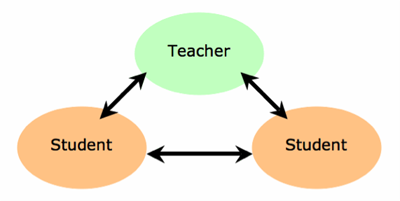Formative assessment
Formative assessment takes place during learning. It enables the teacher to:
- understand what it is that students are actually learning
- provide students with feedback that will enhance their learning
- identify students’ next steps in the learning process
- build a picture of student progress
- better plan the next episode or phase and address gaps in understanding.
Formative assessment feeds back and feeds forward between students and teacher.

Teacher-student
Questions teachers and students should be asking:
- What are we trying to do?
- How well have we done it?
- How do we know?
- What do we do when we don’t know what to do?
What this might look like
- Students pose their own questions and then answer them.
- Students evaluate questions to decide which they should focus on.
- The teacher asks: ‘What is the same and what is different?’ (for example, silage and balage)
- The teacher asks students to “find another example … and another …” (for example, a fertilizer is applied to soils to …).
- On a sheet of A5 paper, students record their thinking about what they have learned, need to know, would like help with.
- Students complete exit slips – an assessment tool that can be used as part of the daily routine.
- The teacher gives students a question or instruction that requires a brief personal response (for example, Write down one thing you learned today … one question you have about today’s lesson … two reasons why …). The students write their response on a card or slip of paper and hand it in as they leave the classroom. The teacher then reviews this feedback and incorporates it into planning for the next lesson.
- The teacher gives an 'answer' and asks the students for the question (for example, “The answer is using minimum tillage when a crop of turnips is being sown. What is the question?”).
- Students assess themselves by:
- using self-assessment grids
- comparing their work with exemplars
- identifying parts of the work that address the predetermined criteria for the task
- identifying aspects of the task that require support to enable them to complete.
- Students engage formally in peer assessment, using an agreed framework, and following coaching in the process by the teacher.
- Students write their responses to a question on mini whiteboards.
- Students generate test or practice examples.
< Back to assessment for learning
Last updated December 5, 2011
TOP


